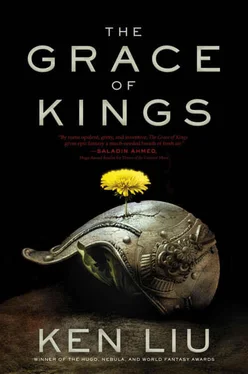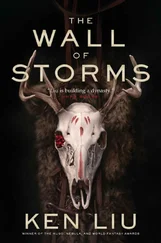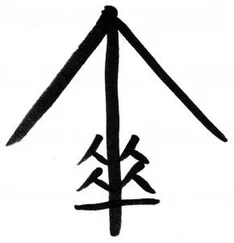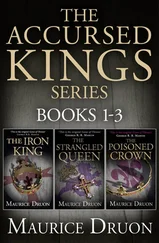“I want to understand you, Mata. But I do not think you understand yourself.”
He put his hand down, got up, and walked away.
LUTHO BEACH: THE THIRD MONTH IN THE FOURTH YEAR OF THE PRINCIPATE.
The Tiro states, old and new, fell upon one another like squabbling children, and the nobles found themselves in a crowded world filled with newly minted aristocrats.
Kings sat uneasily on their thrones. After all, Zyndu had driven away King Thufi and took the Throne of Cocru for himself because he had the loyalty of the army. The example was tempting to the generals of the other Tiro states, and frightening to their kings.
Mata did nothing to discourage the trend, and coups happened in several places as ambitious generals took the places of their former masters. Sometimes , the change was bloodless.

Cocru ships circled around Rui and Dasu, boxing the islands in like a floating wall of wood. The few Dasu ships hid in the harbors, not daring to emerge into the open sea. Kuni Garu made no move to build up a navy to challenge the hegemon. And an airborne invasion was impractical as airships simply did not have that kind of capacity.
The lack of activity after the pamphlets led to whispers that perhaps King Kuni’s ambition was simply to have a larger prison within which to stretch his legs. Gradually, discipline on the Cocru ships grew lax. Sailors on the ships spent their endless patrols playing cards and fishing to add a bit more variety to their monotonous diet of stale biscuits.
Sometime the sailors saw great pods of crubens passing under the ships in the sea lanes between Rui and the Big Island. Sighting a cruben was an auspicious occurrence, and most of the sailors were glad. Maybe it was a sign that the gods favored Hegemon Zyndu, and their time away from the comforts of home would soon be over.

On a deserted stretch of Lutho Beach, in the dead of the night, a pod of crubens beached themselves.
One, two, three… ten crubens crashed through the waves and laid themselves on the sand, where they would have to wait until high tide to swim free again. The sound of their landing was grinding and metallic, less like living flesh, more like the clanging of weapons tumbling across a stone floor.
Suddenly, the crubens yawned and opened their maws wide. But the jaws kept on opening, opening, until the top half of each cruben’s head was pulled so far back that it rested upside down on the creature’s back.
From deep within the belly of the scaled whales, hundreds of men spilled out. The soldiers hiding within the mechanical crubens wore the uniform of Dasu. They had been inside the underwater boats for days, and they greedily gulped the fresh salty night air.
Then, quickly, they melted into the shadows of the night to join their comrades, who had set up temporary barracks in caves along the shore. The empty vessels closed their mouths and waited for high tide, when they would dive beneath the waves and go back to Rui to pick up more passengers.
If one looked at the flags they carried, one might have noticed a small change. The whale charging the red field was covered by a layer of blue-black scales, and there was a great horn on its forehead. The ensign of Dasu was now a cruben rising from a sea of blood.

The mechanical crubens — underwater boats — had been the proudest creation of both Luan Zya and Gin Mazoti. While trying to come up with a way to bypass the blockading navy to land an invasion force on the Big Island, Gin had joked that she wished Kuni could summon the crubens again, as he had on that legendary ride to bring down Emperor Erishi.
A twinkle appeared in Luan’s eyes. “We don’t need to summon the crubens. We can make them.”
He reached for Gin’s hands, and she let him hold them, taking pleasure at the warmth in her lover’s hands.
A boat that could go under water needed to adopt the principles that allowed the airship to adjust buoyancy in a much denser medium. Luan enjoyed the challenge this posed.
The ships were built in secret, in seaside caves on Rui away from the gaze of Zyndu’s airships and spies. Plates of thin and strong sword iron were hammered into circular rings around planks of hard ash, much like a cooper puts hoops around staves to make a barrel. These rigid sections were then attached together with short chains to allow the body of the cruben to flex and bend like a living creature. Shark and whale skins were then wrapped around the frame of the body to waterproof the vessels. At the front, a sharpened bowsprit of ironwood served as the cruben’s single horn.
Buoyancy tanks along the bottom of the boats would cause the vessels to rise or sink, depending on whether they were filled with water or air pumped in via bellows. The inside of the ships had plenty of room for the crew as well as transported soldiers and goods. The eyes, made of thick crystals, allowed the men inside to see out. Other, smaller portholes were made all along the sides of the boats as well to provide illumination for the dark and dim interior.
The vessels had to look like real crubens from above, from which direction came the most danger of detection. The cosmeticians in Dasu’s women’s auxiliary corps painted scales onto the smooth skin, and the work was so detailed that no observer, looking down from a naval ship or airship, could tell the reflected light from these artificial scales apart from the real thing.
With the basic plan of the vessel in place, three great difficulties still remained.
One was the fact that water, unlike air, imposed great pressure. No matter how much they tried to waterproof the vessels, they leaked like crazy and would collapse if they dove too deep. This was not fatal, however, as the mechanical crubens only needed to dive under the blockading ships and to hide from airships. Most of the time, the ships would sail near the surface, only diving deeper as the need arose.
Next was the matter of breathing air for the men onboard. Gin, an avid swimmer and diver, learned that some young men in Dasu, in order to observe the beautiful starfish and corals in shallow lagoons, would swim with their heads under water and breathe through straws held in the mouth with the other end poking above the water. Based on this and the behavior of real crubens, she designed a breathing tube. One end stayed inside the vessel, and the other end, attached to a floating buoy, could be let out to peek above the surface of the sea. A bellows could then be used to pump the water out of the tube to let air in, and the resulting spray looked just like the spray from a real cruben’s blowhole.
The other matter, that of propulsion, was more difficult to solve. Luan initially tried to have the men inside one of the vessels operate the tail like a giant oar, undulating the tail fin in imitation of nature. But this proved far too exhausting and impractical for a trip that would cover the distance from Rui to the Big Island.
But then Luan remembered one of Cogo’s eccentric inventors who had presented a machine that could turn a wheel by means of steam generated from a volcano’s heat and a tank of water. Luan generalized the machine’s principles. He also had learned, through his years of traveling through the Islands, that the bottom of the ocean between Rui and the Big Island was studded with a range of underwater volcanoes whose peaks rose to near the surface of the sea. The rocks around these volcanic vents were heated so that they glowed red. Luan and Gin trained the crews of the mechanical crubens to hover over these vents, and to operate mechanical arms to scoop up these red-hot rocks into a special tank under the boats.
Читать дальше













